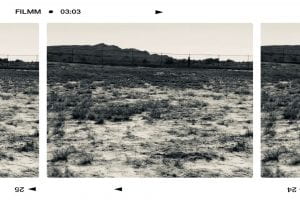Manhattan Project^2
The Second World War ended on September 2nd 1945.
There were many scientific and technological discoveries made within the war, the most violently significant discovery being that of the atomic bomb. The project behind this discovery by the USA is known as: The Manhattan Project.
On October 2nd 2019, our plane landed in Albuquerque, New Mexico, beginning our decent into our field school to learn about the Manhattan Project.
—In The Classroom—
September marked the beginning of a new school year. Our first project was pitched to us almost immediately: The Manhattan Project^2.
As our projects often do, this new project was based around a driving/inquiry question:
How did the development of the atomic bomb change the world in a historically significant way?
And boy did we have a lot to learn to answer this question. Weeks worth of in-class content, and a trip to Albuquerque gave us the chance to gain the intense amount of knowledge needed to complete this project.
In the classroom we worked on a ridiculous amount of content. Often when we are doing a project that includes a field school aspect, we tend to do a lot of the learning on the spot on the trips. This time however, almost everything we needed was taught to us before we even left the school. The science, the history, the definitions and need-to-knows, all of it was already fresh in our minds as well practiced theories before even stepped foot in Vancouver Airport.
—A Crash Course on Atomic Bombs + Historical Significance—
Historical Significance:
Historical significance is the description of a significant event in history. For an event in history to be significant, it must have happened in a time that is considered historic and must have had a lasting impact on the world after it happened.
The Atom Bomb:
The first atomic bomb was detonated in July of 1945 at the Trinity Site in New Mexico, USA. There are two types of atomic bombs;
Uranium– which made up Little Boy, the bomb dropped on Hiroshima, Japan
Plutonium– which made up Fat Man, the bomb dropped on Nagasaki, Japan 3 days later.
The work using a chain reaction of atoms, causing either an explosion of the required element (Uranium), or an implosion of the element (Plutonium) that creates an extremely devastating bomb.
—that’s about 2 weeks worth of classes information combined in a fearfully short amount of writing
—The Project—
Our goal was clear; find the historical significance of the atomic bomb.
Our journey to do that was a little harder. There were many notes taken, many names we had to learn and why they were important, before we could even reach the real reason the atomic bomb was significant. Then we had to find a way to share our answer with the world. Luckily our teachers like a base structure with a lot of creative freedom. This means: a book.
The book above includes everything you need to know about the historical significance of the atomic bomb in extravagant detail. It includes information about everything we learnt in-class and on the trip (and then some). With pictures, videos, and text working together to tell the story of the Atomic Bomb, I am quite proud of the final product of this project.
—The Albuquerque Trip—
On the 2nd of October, 2019 our class made a safe arrival to Albuquerque, New Mexico, USA. This arrival was the beginning of a 6 day learning experience of epic proportions. With many early mornings, late nights, and a few fun stops along the way, we were all set for an amazing desert adventure into the past.
On our trip we had the chances to see some really cool places, have some epic experiences, and see some beautiful views.
It was interesting because for the first time it hit me that the places I had seen in pictures and videos in classes, I was there for real.
I was in Los Alamos– the town where it all began.
I was at the Trinity Test Site– where the first atomic bomb was tested
I was seeing everything I was learning about, I was looking at the lasting impact it had. And that’s how I realized the real truth behind our question: everything we were seeing was the historical significance, everything we were seeing was the lasting impact.
Every early morning and slightly-too-late night was worth it, because we were seeing what we were learning and it only hit me when we were there how unique that really was.
—The Conclusion—
The atomic bomb was created in a necessity for an immeasurable and incomparable weapon of mass destruction that was needed to fight the remaining axis powers. When the first bomb was dropped on Hiroshima on August 6th, 1945, devastation reigned over humanity whilst setting up a new arms race and new scientific explorations in the process. The word was out, the war was almost over, and the world would never be the same again. You can see it in every part of life today- from microwaves to political debates. The creation of the atomic bomb saved and ended lives, and it brought with it a door to many new sciences and discoveries for the future.
The atomic bomb is historically significant because it has created a lasting effect on the world. For better or for worse, the world will never be the same.








